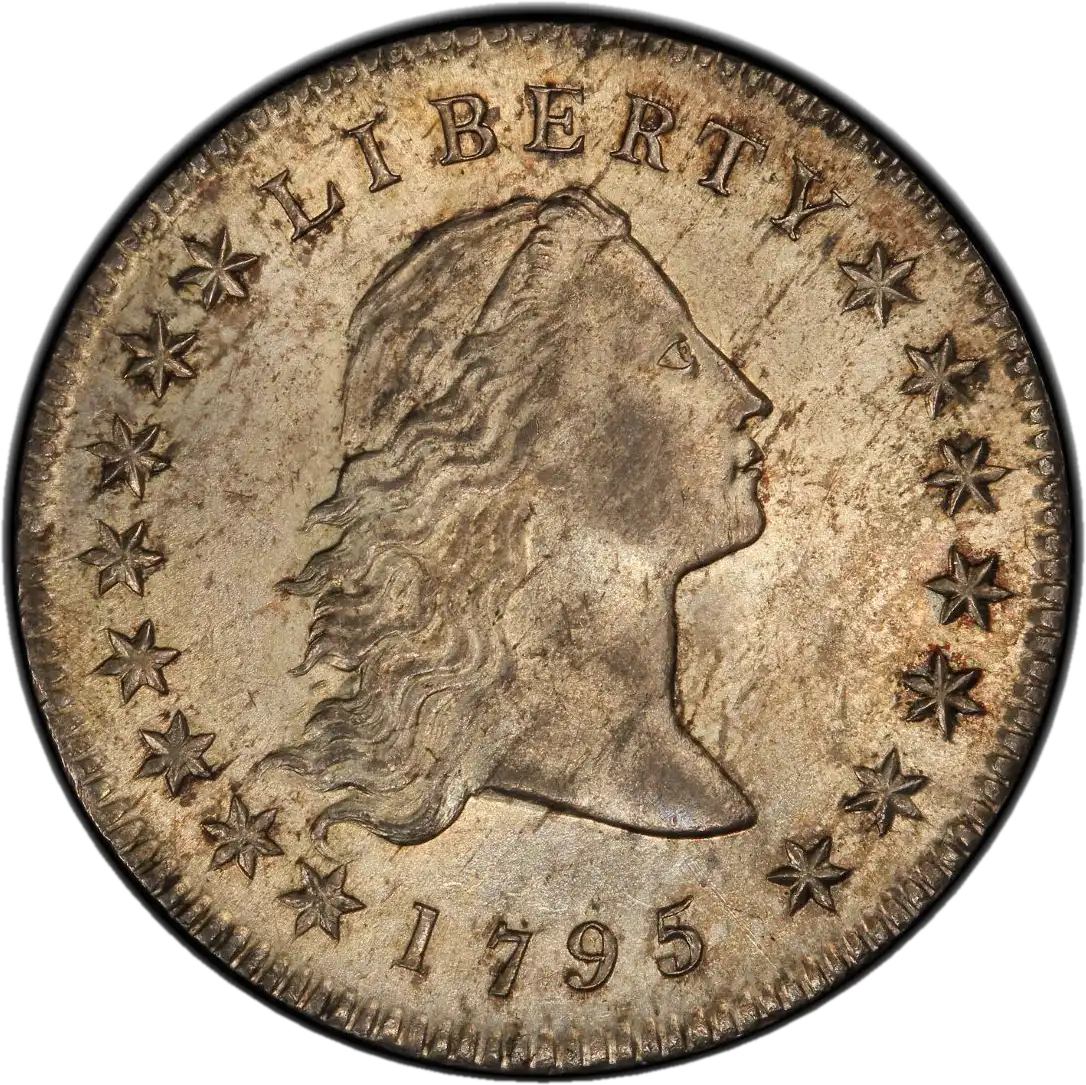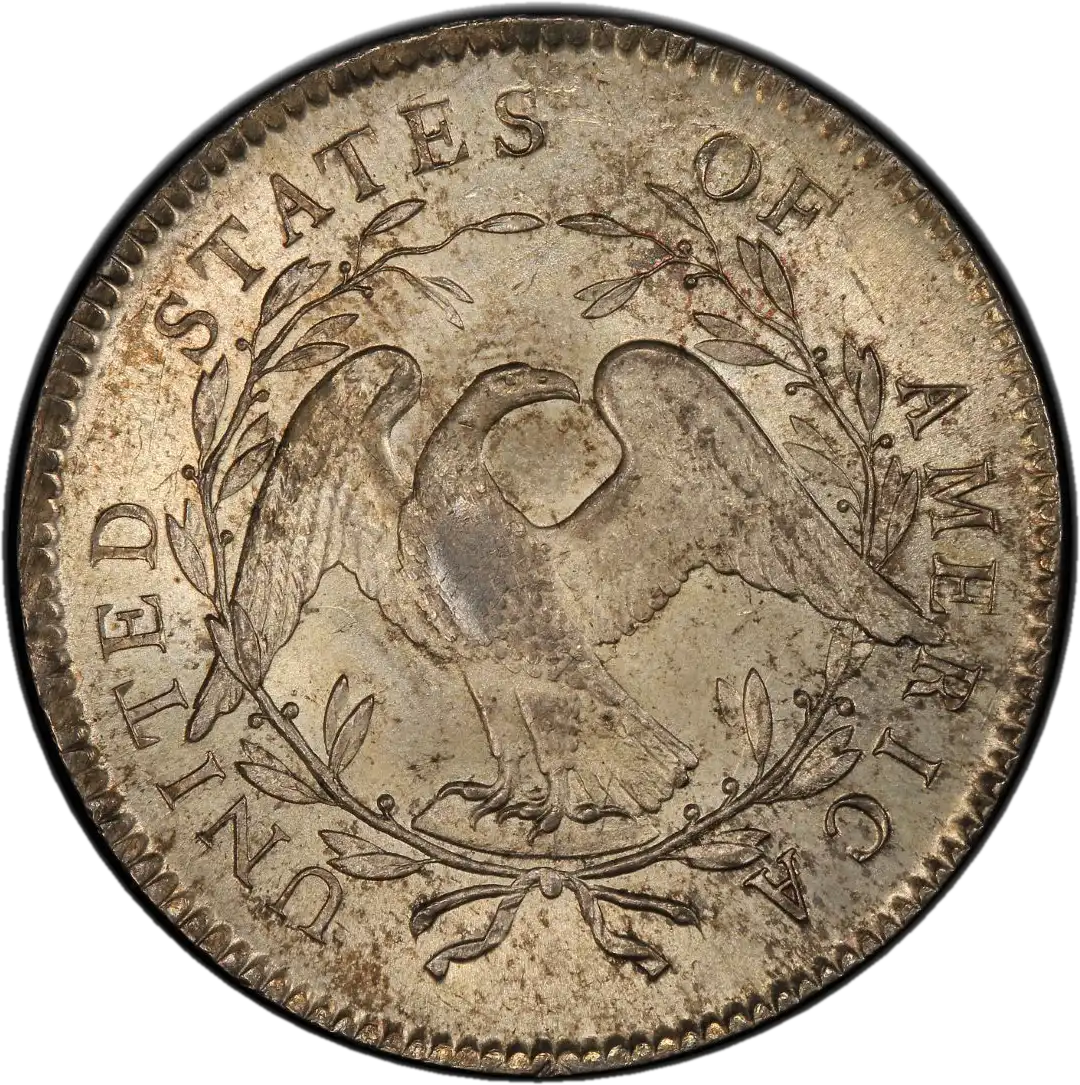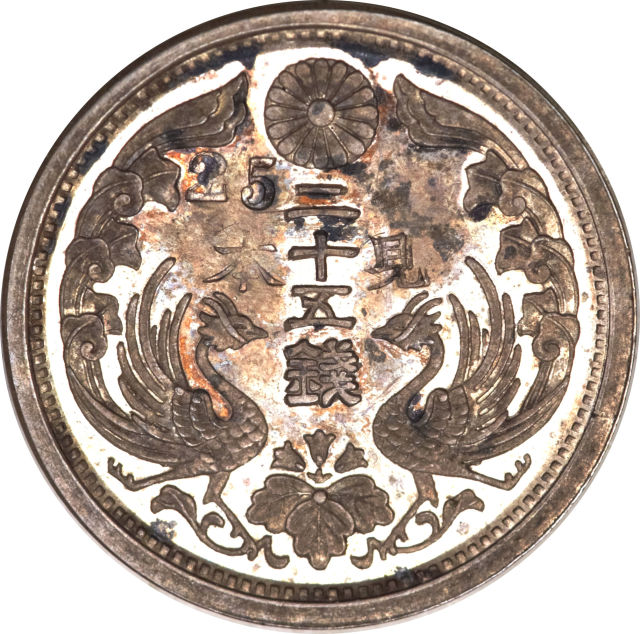USA 1 dollar Flowing Hair 1795
USA, Philadelphia


Rarity
Scarce
Attributes of Coins
| Melt Value | $49.00 24.075g Silver |
|---|---|
| Region | USA |
| Denomination | 1 dollar |
| Krause number | KM# 17 |
| Mintage | 203,033 |
| Metal | Silver 0.893 |
| thickness | 2 mm |
| diameter | 39 mm |
| weight | 26.96 g |
Obverse:

Liberty
Creators:
Robert Scot
LIBERTY
Reverse:

Coat of arms
Star
Creators:
Robert Scot
UNITED STATES OF AMERICA
Introduction of Coins
After October of 1794, the coining of silver dollars was suspended until the following spring. It was not until May that the U. S. Mint had its new and larger press ready for dollar coinage. Since the Mint's figure of 203,033 dollars coined during 1795 does not break down this production into the two different types dated 1795, this number is merely a starting point. In addition, it has been firmly established that dies were utilized until they failed, so that the date of any coin through about the mid-1830s does not guarantee that it was coined during that calendar year. Estimates by numismatists of the number of 1795 Flowing Hair Dollars coined range from 160,295 to as many as 290,000, depending on how one interprets the several deliveries made from coiner to treasurer. The bottom line is that the 1795 Flowing Hair Dollars are the only ones available to all but the wealthiest collectors, and they thus are in great demand as type coins. Some 10 obverse dies were paired in various combinations with 11 reverses, and this resulted in a total of 19 die marriages. Two different head punches were used, the high relief Head of 1794 with its rounded bust point and the lower relief Head of 1795 with a pointed tip to Liberty's bust. Type collectors have shown little inclination to acquire both styles, but the various die marriages remain popular with specialist variety collectors. Rare varieties include BB-11, BB-12 and BB-2, while BB-15, BB-16, BB-17, BB-10, BB-23, BB-28 and BB-29 are considered very rare. The "BB" numbers reference the Bowers-Borckardt book of 1993 and its successor volume published in 2013. Old School collectors still utilize the "B" numbers devised by Milferd Bollender for his 1950 reference book that was later updated by Jules Reiver. Several die marriages have been found with one or even two silver plugs inserted into the planchet prior to striking. Current thinking is that this was done to salvage underweight planchets that otherwise would have been destroyed, but no period documentation is known for such action. More commonly seen are irregular filing marks across either side of these coins to reduce overweight planchets within legal tolerance prior to striking. While a bit distracting, these adjustment marks are a by-product of the coining process and do not preclude numeric grading.Read More













